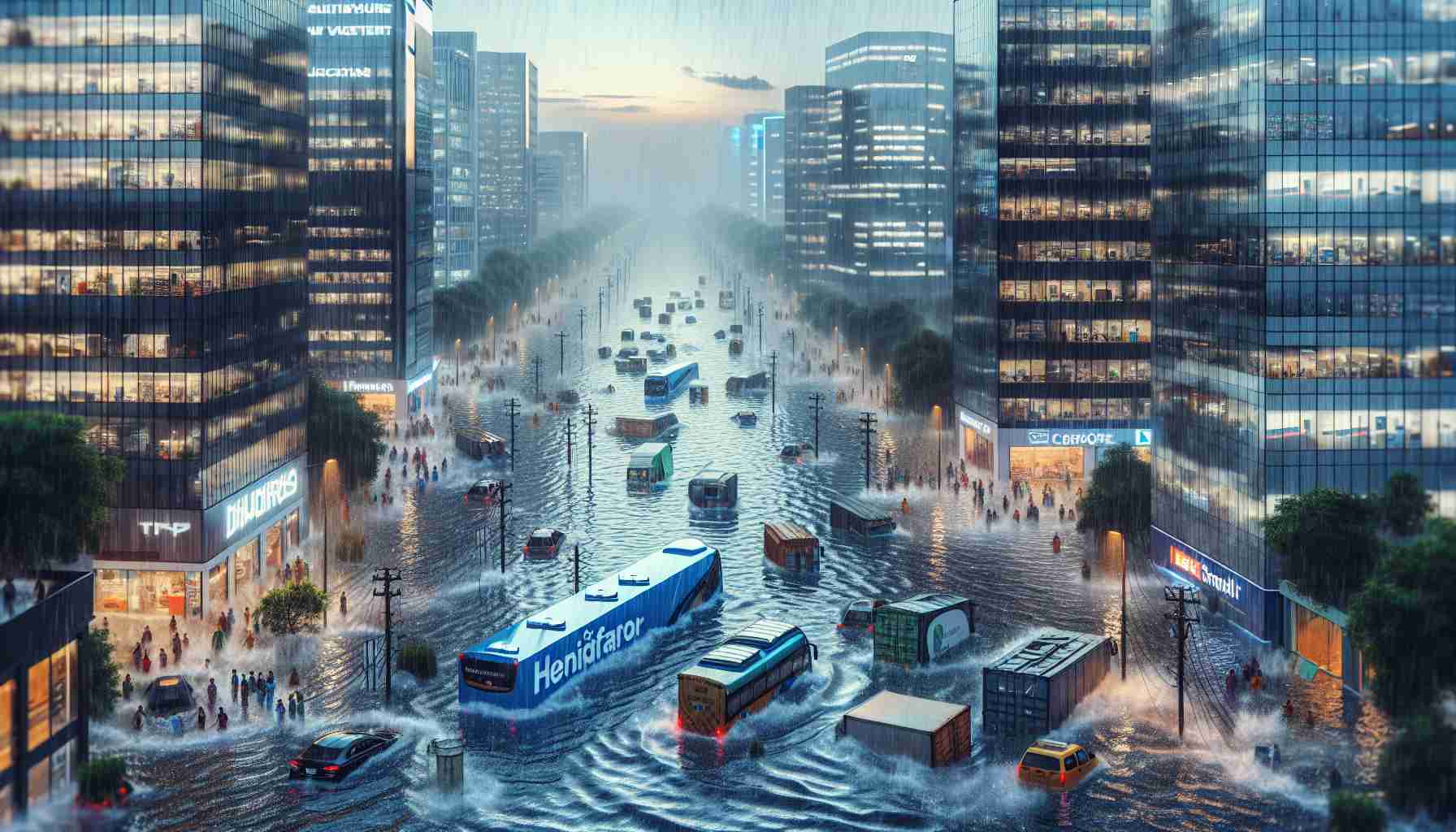Bengaluru is currently grappling with a relentless downpour, leading to significant waterlogging and flooding in numerous parts of the city. The impacts are especially pronounced at Manyata Tech Park, a major office complex that spans 300 acres. Employees at this key tech location have been advised to remain inside their workplaces as conditions worsen, with flooding making both indoor and outdoor movement difficult.
Footage shared online vividly illustrates the extent of the flooding, revealing vehicles stranded on inundated streets. One particularly striking video showcased water cascading down a wall, resembling a natural waterfall in the midst of the urban landscape. This observation inspired a social media user to humorously rebrand the area as “Manyata Tech Falls,” highlighting the dramatic transformation of the tech park while also calling for urgent attention to the underlying issues.
Despite the lighthearted take, the situation underscores critical concerns regarding Bengaluru’s infrastructure, which has struggled to manage heavy rainfall effectively. Many users expressed a mix of disbelief and concern, noting the area’s proximity to Nagawara Lake as a contributing factor to the recurring flooding problems.
In light of the severe conditions, the Indian Meteorological Department has issued an ‘orange’ alert for the region. Schools across the city, particularly aided and private institutions, have been ordered to close, adding to the disruptions caused by the torrential rainfall.
Life Hacks and Tips for Navigating Bengaluru’s Monsoon Challenges
As Bengaluru faces relentless rainfall and flooding, particularly around notable areas like Manyata Tech Park, it’s essential to have strategies in place for weathering these turbulent times. Here are some tips, life hacks, and interesting facts to help you navigate the challenges posed by the monsoon season in this vibrant city.
1. Stay Informed with Weather Updates
Monitoring local weather forecasts is crucial during the monsoon. Use reliable weather apps or websites to stay updated on rainfall predictions. This can help you plan your day better and avoid getting caught in severe weather.
2. Prepare an Emergency Kit
With potential flooding, having an emergency kit is wise. Include essentials such as water, non-perishable food, a flashlight, batteries, and a first-aid kit. These supplies will be invaluable if you find yourself stranded indoors due to heavy rainfall.
3. Invest in Waterproof Gear
An effective way to combat the monsoon season is by investing in quality waterproof gear. A sturdy umbrella, waterproof shoes, and a raincoat can keep you dry and comfortable as you navigate the city.
4. Know Alternate Routes
Heavy rains often lead to road obstruction and waterlogging. Familiarize yourself with alternate routes around your neighborhood and workplace. Use navigation apps that provide real-time traffic updates, helping you avoid flooded streets.
5. Make Use of Public Transportation
When the roads are particularly bad, public transport can be a safer and more reliable option. Familiarize yourself with the nearest bus or metro stations, and consider using them to avoid navigating in your vehicle through flooded areas.
6. take Safety Precautions Near Water
While it may be tempting to take photos near flooded areas, it’s crucial to prioritize your safety. Avoid walking near the edges of flooded streets and be cautious of submerged obstacles that may not be visible.
7. Protect Your Home
Prevent flooding in your living space by ensuring that your drainage systems are clean and functional. Check for leaks, and if necessary, use sandbags to prevent water from entering your home during heavy rains.
8. Understand Local Infrastructure Challenges
Awareness of your city’s infrastructure issues, especially in areas prone to flooding such as near Nagawara Lake, can aid in planning. Understanding these challenges can also empower residents to advocate for better solutions.
Did You Know?
Bengaluru is often dubbed the “Silicon Valley of India” due to its booming tech industry. However, the city was originally built on a series of lakes, which complicates modern drainage. The transformation from lakes to urban spaces has intensified flooding issues during monsoon seasons.
By taking proactive measures, you can not only navigate the difficulties posed by Bengaluru’s monsoon but also protect yourself and your belongings. For more information on how to stay prepared during this season, be sure to check Indian Meteorological Department for weather updates and safety tips.
